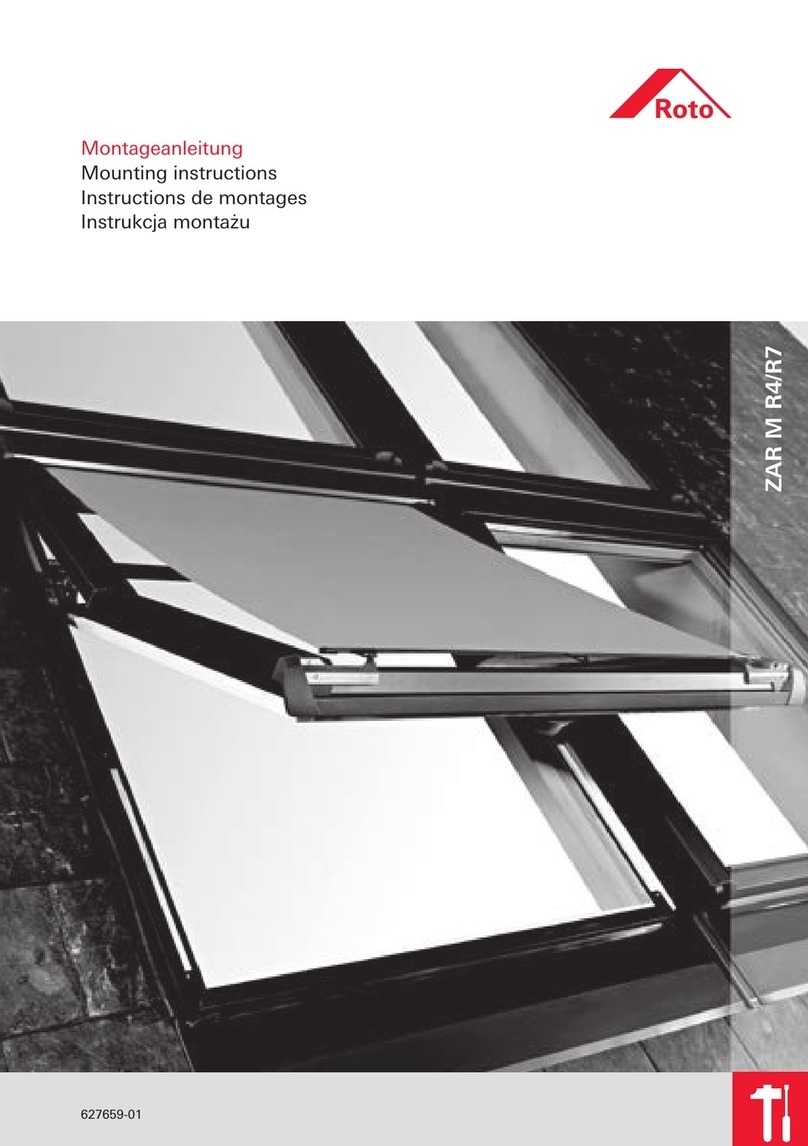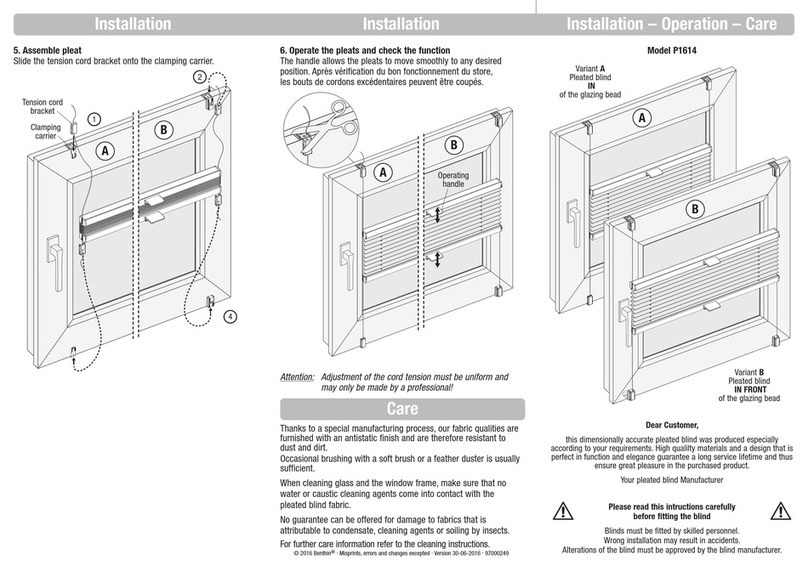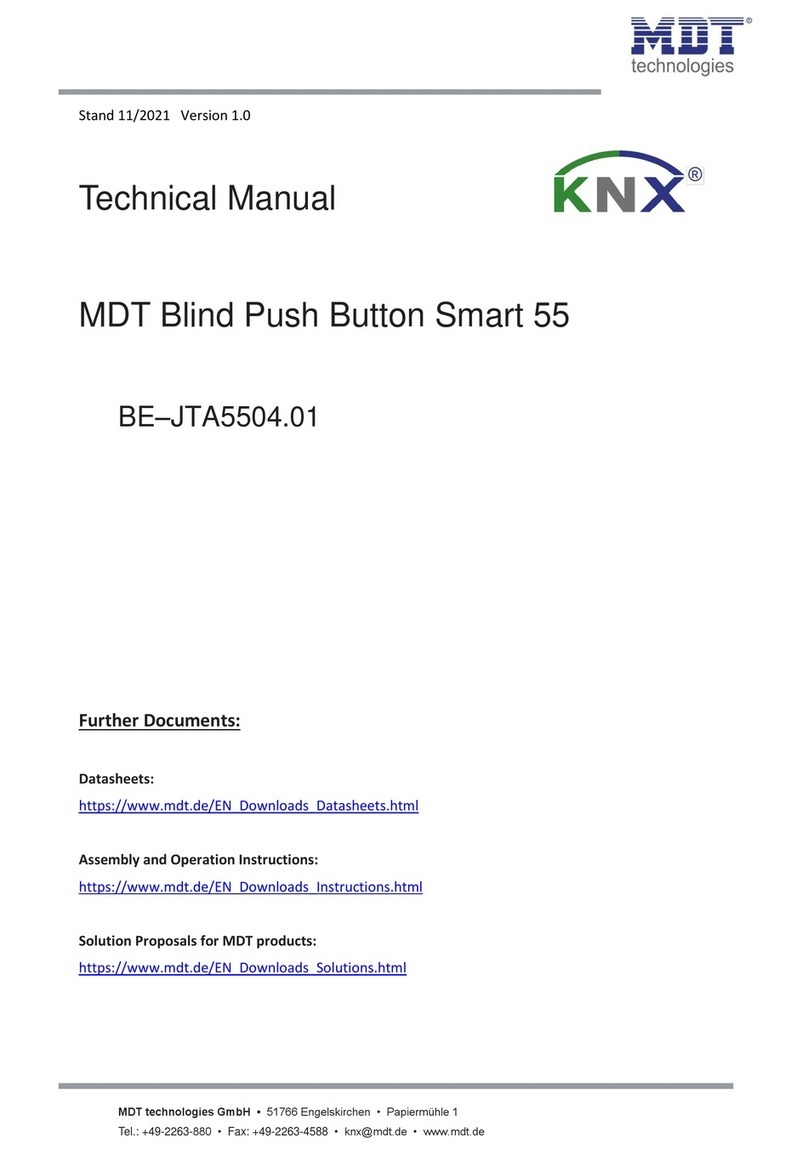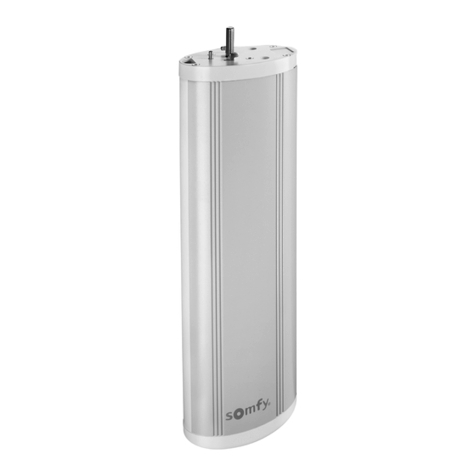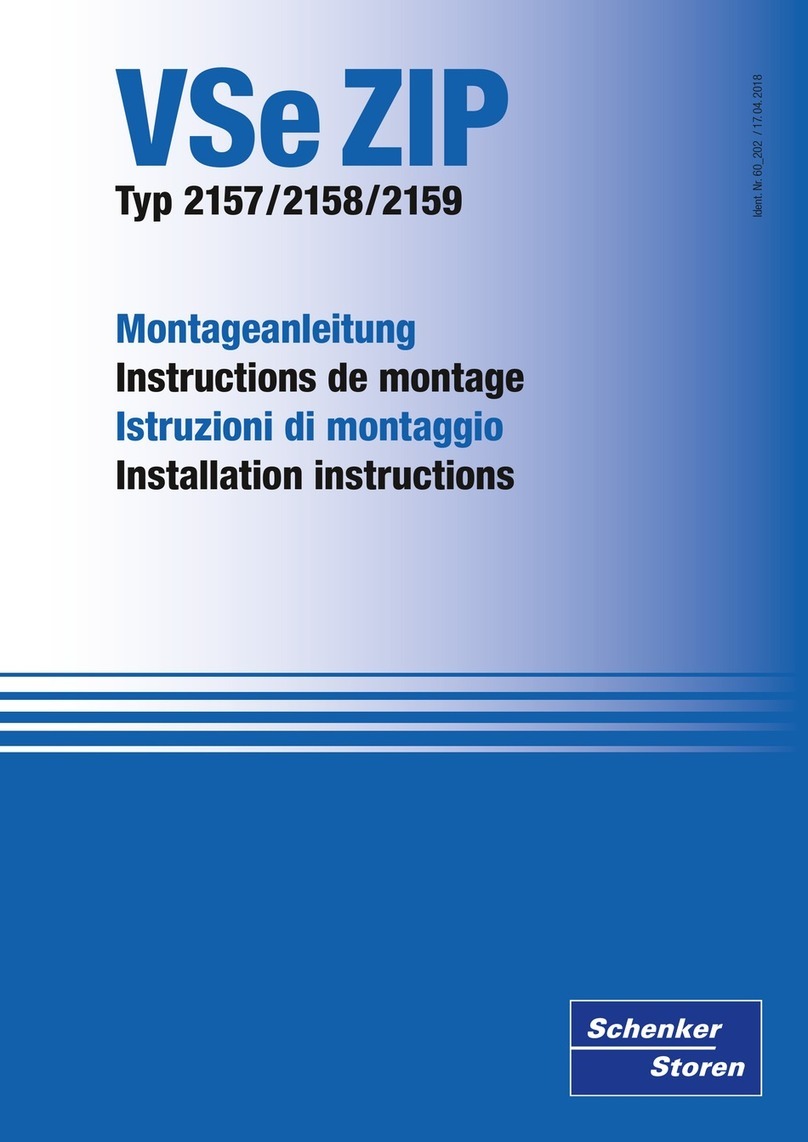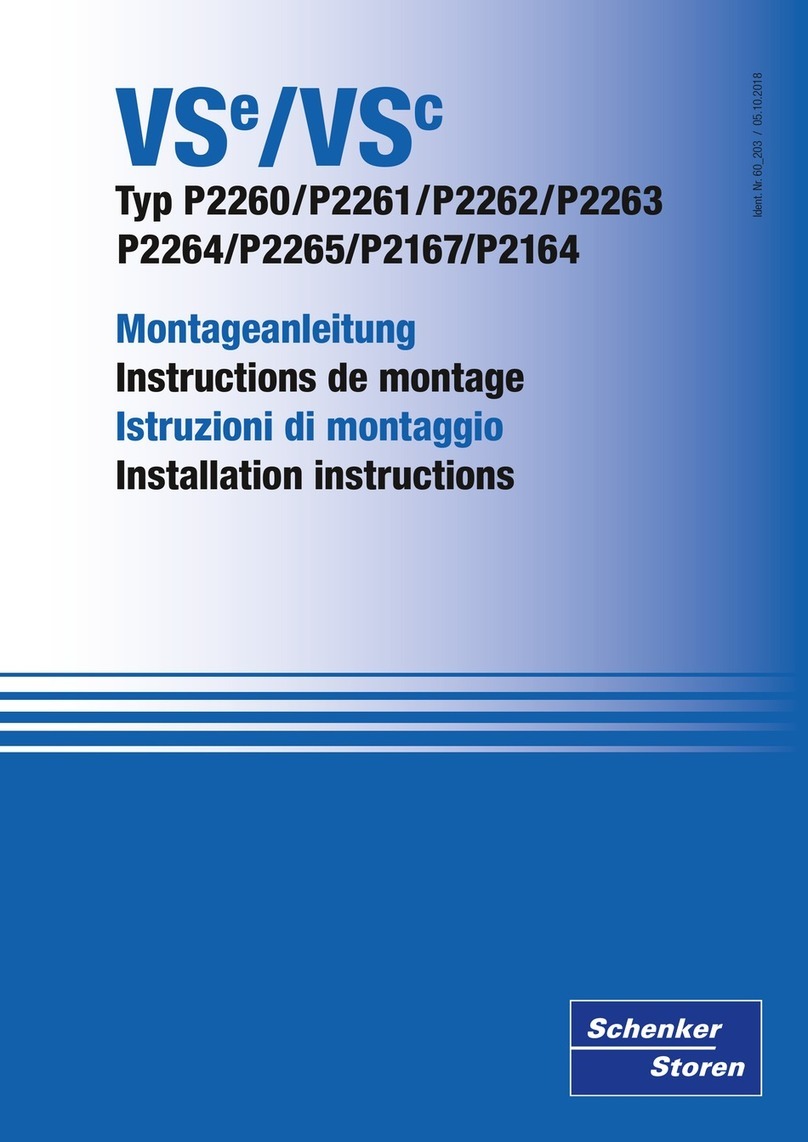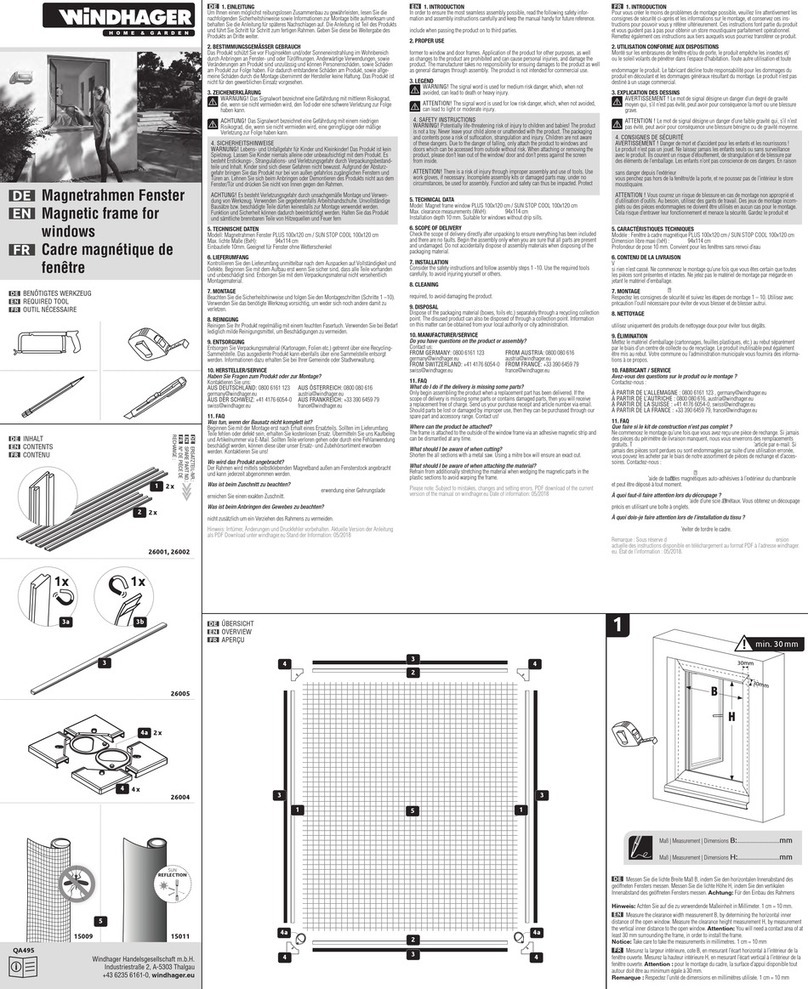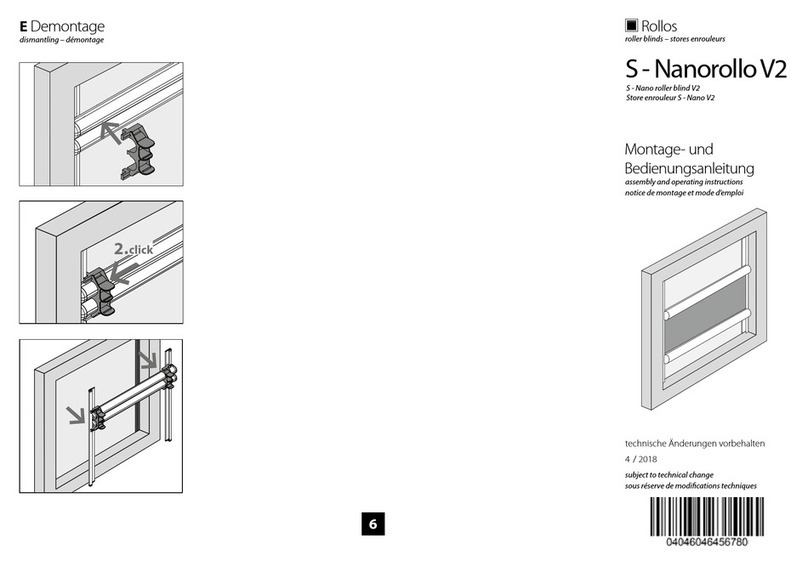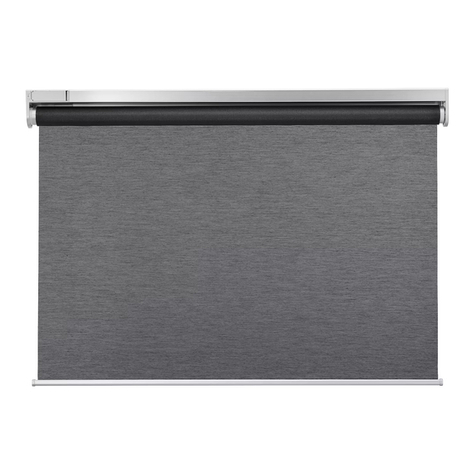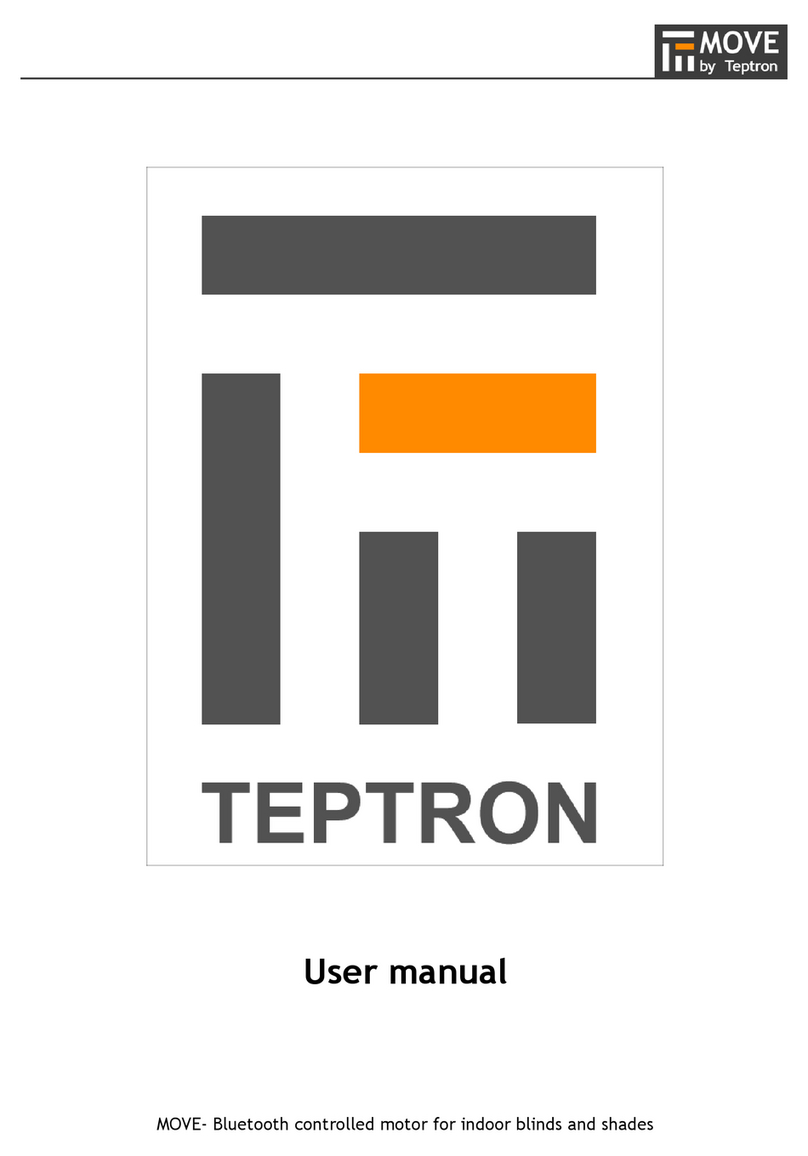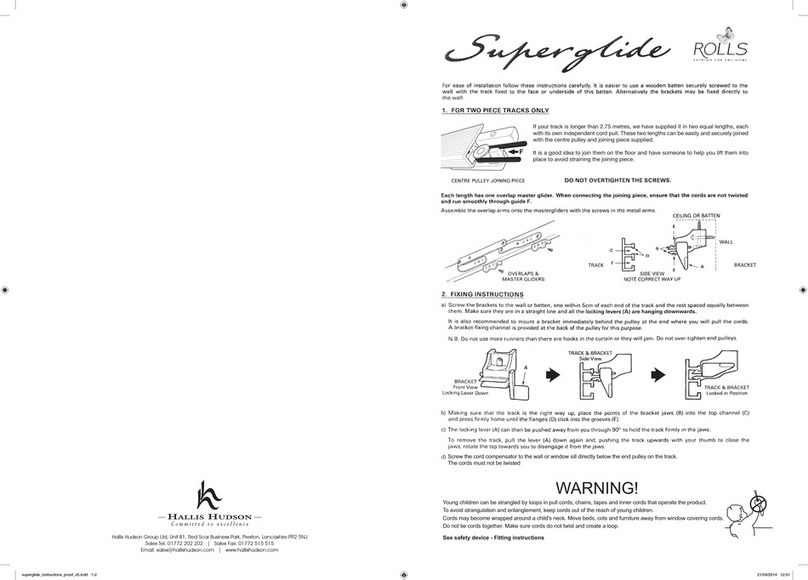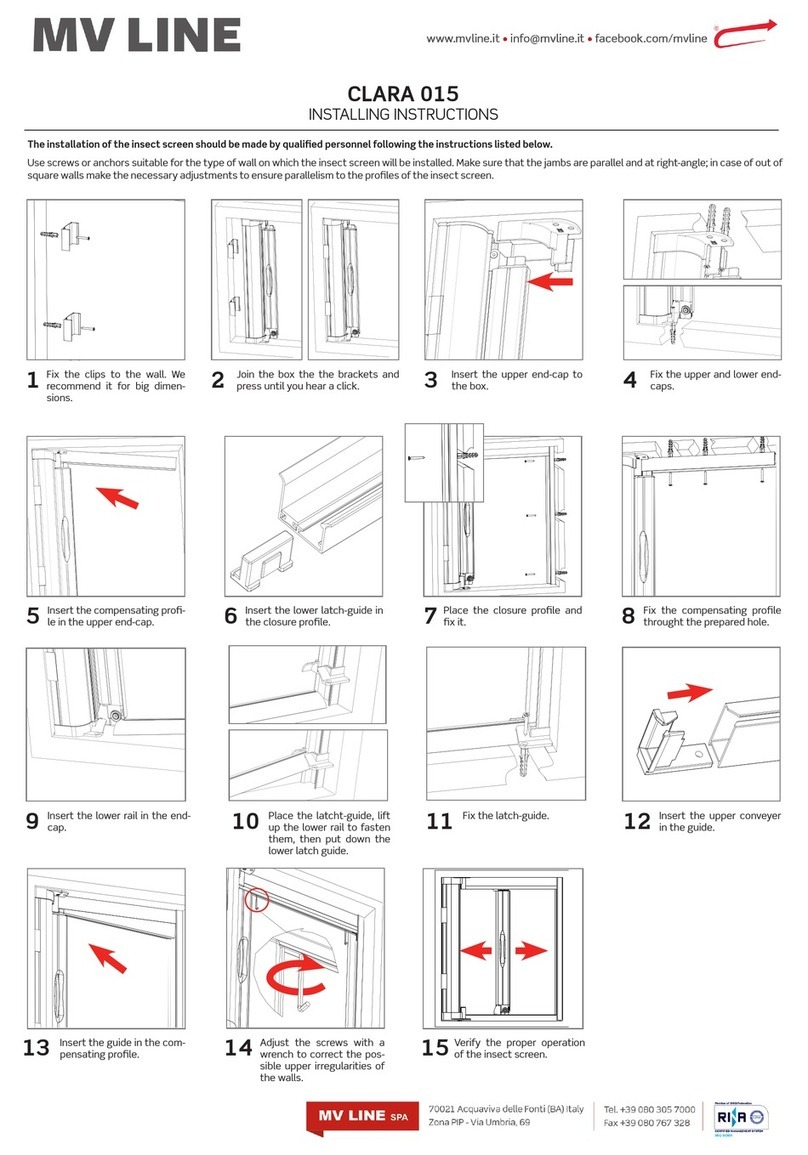
8
001SSVRS2022
ERP: 60352 10/2022
2. Sécurité
Ce chapitre fournit d’importantes infor-
mations concernant l’exploitation sûre et
l’entretien sûr des stores à lamelles.
Il définit l’utilisation conforme à l’aectation
et l’état de fonctionnement sûr des stores
à lamelles. Il informe le lecteur des dangers
particuliers qui sont susceptibles d’être
associés aux stores à lamelles ainsi que
des éventuelles zones dangereuses.
L’inobservation des consignes de sécurité
peut conduire à des accidents suscep-
tibles d’être accompagnés par de graves
blessures corporelles ou par d’importants
dommages matériels.
2.1 Utilisation conforme à l’aectation
Les stores à lamelles servent à protéger
contre l’éblouissement, la lumière, des
regards indiscrets et permee de régler/
contrôler l’apport de l’énergie solaire.
Le respect des conditions-cadres sui-
vantes fait également partie de l’utilisation
conforme à l’aectation.
• État de fonctionnement sûr des stores
• Exploitation uniquement dans le cadre
du dimensionnement technique
• Observation du manuel d’utilisation,
en particulier des consignes d’entre-
tien et de maintenance.
Toute utilisation autre que celle indiquée ou
toute utilisation dépassant le cadre prescrit
est considérée comme non conforme
à l’aectation. Le fabricant décline toute
responsabilité quant aux éventuels dom-
mages qui en résulteraient.
2.2 État de fonctionnement sûr
Les stores à lamelles ne doivent être
exploités que dans un état de fonction-
nement sûr et en tenant compte de ce
manuel d’utilisation. L’état de fonction-
nement sûr prévaut tant que toutes les
conditions suivantes sont réunies:
• Absence de dégâts, de dérange-
ments ou de sources de dangers
manifestes
• Les stores à lamelles sont dans leur
état d’origine.
Si l’état de fonctionnement sûr n’est plus
garanti, il faut immédiatement mere
les stores à lamelles hors service et les
condamner pour en empêcher toute re-
mise en service accidentelle ou délibérée.
2.3 Dangers généraux
Les dangers généraux suivants sont
susceptibles d’être associés à des stores à
lamelles:
Tension dangereuse–Danger de
mort dû à des pièces conductrices
de l’électricité! Tout contact avec des
pièces conductrices de l’électricité
provoque la mort par électrocution ou
de graves blessures.
• Seul du personnel de service
et d’entretien qualifié a le droit
d’eectuer des travaux de
réparation sur des composants
électriques.
• Déconnecter les composants
électriques avant les travaux
d’entretien et les condamner pour
en empêcher toute reconnexion.
• Avant le début de travaux sur des
composants électriques, s’assurer
de l’absence de tension.
Risque d’écrasement et de cisaille-
ment–L’abaissement et la montée
des stores ainsi que des mouvements
de réglage peuvent entraîner des
blessures aux mains par écrasement
ou cisaillement.
• Ne pas placer ses mains dans les
pièce en mouvement des stores.
• Tenir la télécommande hors de
portée des enfants.
Risque de chute–Les travaux en hau-
teur sont associés à un risque inhérent
de chute susceptible de causer de
graves blessures.
• Ne jamais eectuer de travaux
en hauteur sans protection
correspondante contre les chutes.
• Les travaux eectués à de très
grandes hauteurs ne doivent être
réalisés que par du personnel
formé non sujet au vertige.

